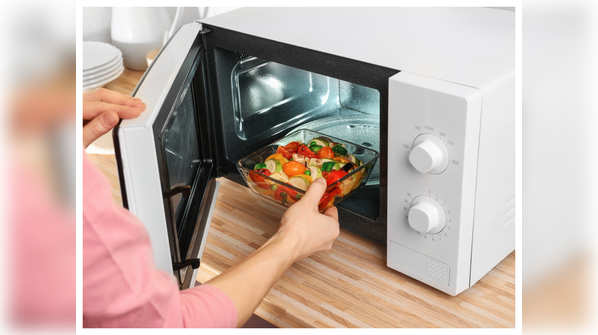Истакнути
- Преузми линк
- X
- Имејл адреса
- Друге апликације
Can Resistant Bacteria Survive in Microwave Ovens, and How Harmful Are They to Our Health?

Microwave ovens are a staple in many kitchens, known for their convenience and speed in reheating food. However, concerns have arisen regarding whether these appliances can effectively kill bacteria, particularly resistant strains, and what the implications are for our health. In this blog post, we'll explore the survival of resistant bacteria in microwave ovens and the potential health risks they pose.
How Microwaves Work
Microwave ovens heat food by emitting microwave radiation, which causes water molecules in the food to vibrate and generate heat. This heat is what cooks or warms the food. While microwave radiation is effective at heating food, it does not necessarily guarantee the complete elimination of bacteria, especially if the food is not heated evenly or to a sufficiently high temperature.
Can Resistant Bacteria Survive in Microwaves?
Inconsistent Heating: One of the primary concerns with microwaves is uneven heating. If certain parts of the food do not reach a high enough temperature, bacteria can survive. Resistant bacteria, such as some strains of Staphylococcus aureus or Escherichia coli, may withstand lower temperatures or uneven heat distribution.
Biofilms: Some bacteria form protective biofilms that can shield them from heat. These biofilms may help bacteria survive the microwaving process, particularly in areas of the food that are not adequately heated.
Heat Resistance: Some bacteria have evolved mechanisms to survive higher temperatures, making them more resistant to the heat generated by microwaves. While most common bacteria are killed at temperatures above 165°F (74°C), resistant strains may require higher temperatures or longer exposure to heat.
Health Risks of Resistant Bacteria
Foodborne Illnesses: Consuming food contaminated with resistant bacteria can lead to foodborne illnesses, which may be more difficult to treat due to the bacteria's resistance to antibiotics.
Infections: If resistant bacteria are not killed during microwaving, they can cause infections if ingested, particularly in vulnerable individuals such as those with weakened immune systems.
Antibiotic Resistance: The survival of resistant bacteria in microwaves may contribute to the broader issue of antibiotic resistance, where bacteria become increasingly difficult to treat with standard medications.
Tips for Safe Microwave Use
Even Heating: To ensure even heating, stir or rotate food during microwaving. Use microwave-safe covers to trap steam and promote uniform cooking.
Check Temperature: Use a food thermometer to check that the internal temperature of microwaved food reaches at least 165°F (74°C), which is sufficient to kill most bacteria.
Use Proper Containers: Always use microwave-safe containers to avoid chemical leaching and ensure that the food heats evenly.
Avoid Reheating Multiple Times: Reheating food multiple times can increase the risk of bacterial growth. Try to reheat only what you plan to consume.
Conclusion
While microwave ovens are a convenient tool in the kitchen, they may not always eliminate all bacteria, especially resistant strains. To minimize health risks, it's essential to follow safe microwave practices, such as ensuring even heating and using a food thermometer. By taking these precautions, you can enjoy the convenience of microwave cooking while protecting your health.
By understanding the limitations of microwave ovens and taking proper precautions, you can reduce the risk of exposure to harmful bacteria and ensure your food is safe to eat.
- Преузми линк
- X
- Имејл адреса
- Друге апликације
Популарни постови
7 Health Benefits of Papaya: A Nutritional Powerhouse
- Преузми линк
- X
- Имејл адреса
- Друге апликације
Unlocking the Secrets to a Healthy Heart: Tips for Improving Heart Health
- Преузми линк
- X
- Имејл адреса
- Друге апликације
Коментари
Постави коментар